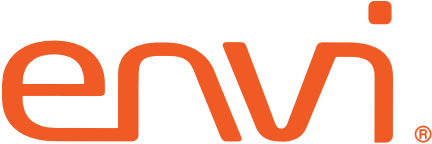Implementation Best Practices
“We organized the implementation project based on tasks, process workflows and user roles. Our warehouse manager did an exceptional job with data preparation and Provista provided data cleansing services. We did process mapping to compare previous to future state, and prepare users for change. When we went live, adoption was immediate. We spent time on training (both onsite and web-based) to make sure users were ready; everyone was required to participate in a training session.”
Katie Risvold, Community Blood Center of the Carolinas
Build seamless new processes that reduce manual, burdensome work
Create a foundation of accurate data to ultimately drive end-to-end automation
Establish ways to measure savings and results
Step 1: Get implementation-ready: define the vision, line up executive support
???? Create a high level roadmap that outlines current state and measurable goals for the future
– Set measureable goals and objectives that align with overall organization goals
???? Set expectations of schedules, milestones, tea members, meetings
???? Identify gaps early!
– Get all stakeholders involved in decision-making, including team members with direct responsibility for using and implementing the new system
Example: The executive decision maker may be attending solution demos, but key line level team members may have more insight to current processes, gaps, and legacy system capabilities


Step 2: Establish internal implementation team, representing all functional areas
???? Assign a project manager who’ll take lead on the overall project deliverables, deadlines, internal team coordination and progress reporting
– Provide the executive sponsor with ongoing updates and red flags if deadlines are missed
???? Create an internal communications program, providing a status report every two weeks
– Include everyone on the implementation team, and most importantly, the executive sponsor and person who signed the contract (both, if those are two different people)
– Identify key milestones and a quick reference visual to show progress of each: red, yellow, green lights work for at-a-glance reporting
???? Roll-out your plan to the entire organization, focusing on departmental involvement and how goals and objectives will be adjusted and measured
Step 3: Whiteboard current processes: If processes aren’t well-documented, take time with your team to whiteboard the current state and the path to your envisioned future
???? Identify gaps and work arounds that must be addressed to improve efficiency
???? What internal systems to you need to integrate with? What system requirements exist? Are there interfaces available?
???? Leverage the implementation resources that are available to you! Vendor implementation managers are experts, not only with the vendor’s solution, but also with industry best practices from across healthcare organizations

Step 4: Define user roles and responsibilities
???? Roles will need to be updated following the implementation of new supply chain automation software
???? Make sure to clearly define changes to roles, as you’re defining processes

Step 5: It’s all about the data – take steps to get it right!
???? Pull the specific data needed to build your new system
– This often includes 12-18 (sometimes 24) months of purchasing history, any usage or consumption tracking available
???? Once you have source data pulled from available reporting sources, you may consider a 3rd party vendor for deduplication, data cleansing, normalization, identification of attributes, etc.
Step 6: (This is the hard one!) If possible, slot schedule new implementation projects to limit the number starting simultaneously or overlapping
???? Consider the requirements on the same team members, who may have other responsibilities that have to be managed in parallel
Step 7: Make training a requirement for all team members and end users of the new system
???? Set up a training environment and take advantage of the opportunity to practice new processes and understand the data flow
???? Conduct training not only on new software, but also, new processes
???? Implement change management practices to reinforce new behaviors



